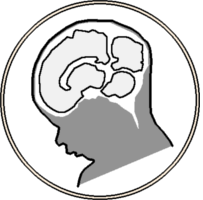Coll-Font, Jaume, Onur Afacan, Scott Hoge, Harsha Garg, Kumar Shashi, Bahram Marami, Ali Gholipour, Jeanne Chow, Simon Warfield, and Sila Kurugol. 2021. “Retrospective Distortion and Motion Correction for Free-Breathing DW-MRI of the Kidneys Using Dual-Echo EPI and Slice-to-Volume Registration”. J Magn Reson Imaging 53 (5): 1432-43.
Abstract
BACKGROUND: Diffusion-weighted MRI (DW-MRI) of the kidneys is a technique that provides information about the microstructure of renal tissue without requiring exogenous contrasts such as gadolinium, and it can be used for diagnosis in cases of renal disease and assessing response-to-therapy. However, physiological motion and large geometric distortions due to main B0 field inhomogeneities degrade the image quality, reduce the accuracy of quantitative imaging markers, and impede their subsequent clinical applicability.
PURPOSE: To retrospectively correct for geometric distortion for free-breathing DW-MRI of the kidneys at 3T, in the presence of a nonstatic distortion field due to breathing and bulk motion.
STUDY TYPE: Prospective.
SUBJECTS: Ten healthy volunteers (ages 29-38, four females).
FIELD STRENGTH/SEQUENCE: 3T; DW-MR dual-echo echo-planar imaging (EPI) sequence (10 b-values and 17 directions) and a T2 volume.
ASSESSMENT: The distortion correction was evaluated subjectively (Likert scale 0-5) and numerically with cross-correlation between the DW images at b = 0 s/mm2 and a T2 volume. The intravoxel incoherent motion (IVIM) and diffusion tensor (DTI) model-fitting performance was evaluated using the root-mean-squared error (nRMSE) and the coefficient of variation (CV%) of their parameters.
STATISTICAL TESTS: Statistical comparisons were done using Wilcoxon tests.
RESULTS: The proposed method improved the Likert scores by 1.1 ± 0.8 (P < 0.05), the cross-correlation with the T2 reference image by 0.13 ± 0.05 (P < 0.05), and reduced the nRMSE by 0.13 ± 0.03 (P < 0.05) and 0.23 ± 0.06 (P < 0.05) for IVIM and DTI, respectively. The CV% of the IVIM parameters (slow and fast diffusion, and diffusion fraction for IVIM and mean diffusivity, and fractional anisotropy for DTI) was reduced by 2.26 ± 3.98% (P = 6.971 × 10-2 ), 11.24 ± 26.26% (P = 6.971 × 10-2 ), 4.12 ± 12.91% (P = 0.101), 3.22 ± 0.55% (P < 0.05), and 2.42 ± 1.15% (P < 0.05).
DATA CONCLUSION: The results indicate that the proposed Di + MoCo method can effectively correct for time-varying geometric distortions and for misalignments due to breathing motion. Consequently, the image quality and precision of the DW-MRI model parameters improved.
LEVEL OF EVIDENCE: 2 TECHNICAL EFFICACY STAGE: 1.
Last updated on 02/27/2023
